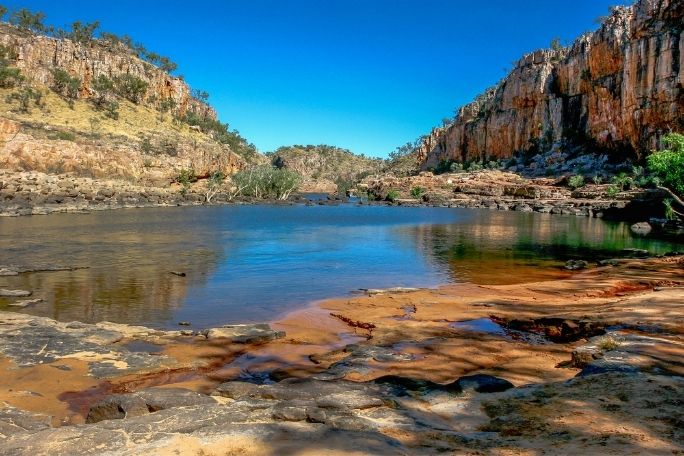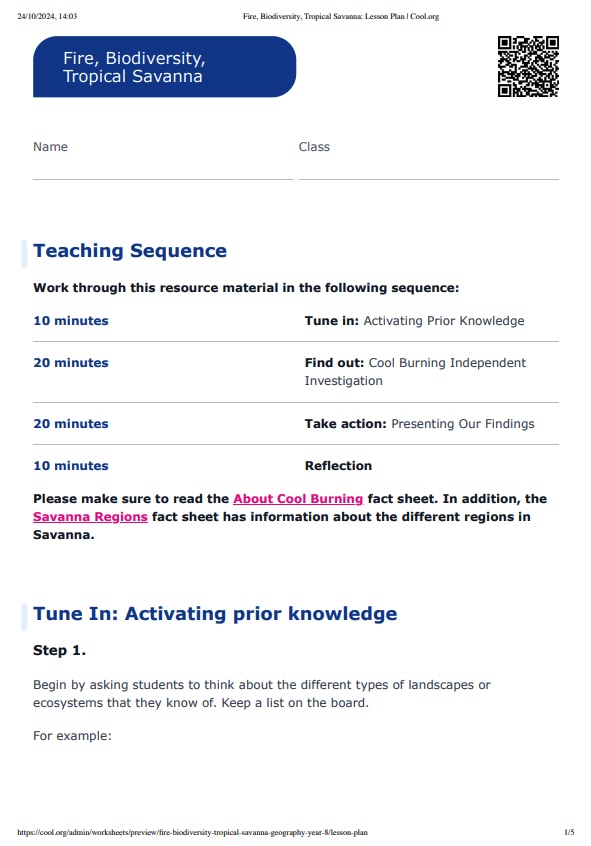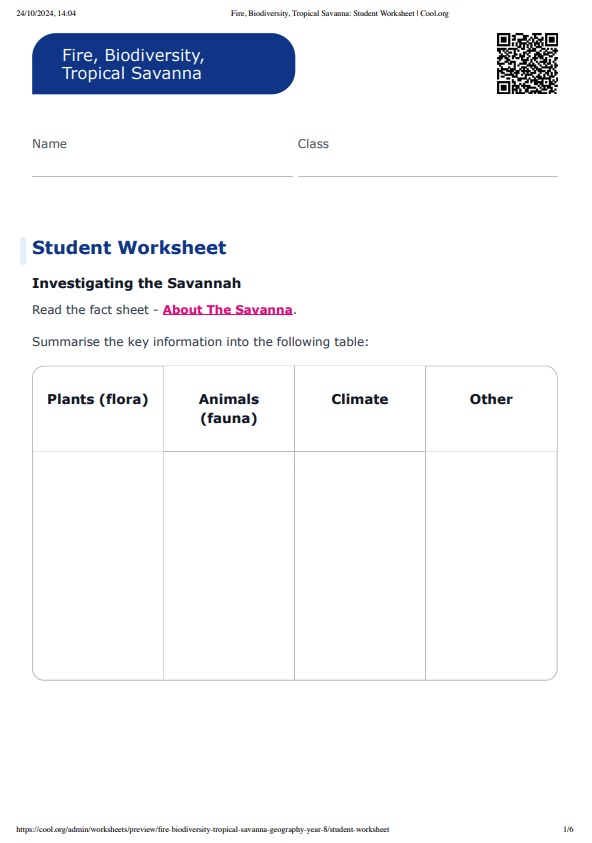Lesson summary
Students explore the location and distribution of Australia’s distinctive landscapes, particularly the tropical savannah, and examine the biodiversity present there and the area is affected by fire.
Learning intentions:
Students will...
- understand the location and distribution of Australia’s distinctive landscapes.
- understand the biodiversity present in these landscapes.
Success criteria:
Students can...
- explain how Aboriginal and Torres Strait Islander peoples use fire to manage the landscape in the savannah, and how flora interacts with this element.
Partner acknowledgement
Cool.org would like to acknowledge the support of the North Australian Indigenous Land and Sea Management Alliance Ltd (NAILSMA) in creating these resources.
Lesson guides and printables
Curriculum links
Select your curriculum from the options below.
Lesson details
Curriculum mapping
Syllabus Outcomes: AC9HG8K02
Cross Curriculum Priority: Sustainability, Aboriginal and Torres Strait Islander Histories and Cultures.
Relevant parts of Year 8 achievement standards: Students describe the effects of human activity or hazards on environments. They explain the features of a distribution and identify implications. They explain the interconnections between people and places and environments. They explain how these interconnections change places or environments. Students explain responses or strategies to address a geographical phenomenon or challenge, referring to environmental, economic or social factors.
Resources required
- BOLTSS mapping conventions
- Device capable of presenting a website to the class.
- Student Worksheet - one copy per student.
- Factsheet - About The Savanna
- Factsheet - Savanna Regions
- Australian Tropical Savanna PowerPoint.
Skills
This lesson is designed to build students’ competencies in the following skills:
- communication
- critical thinking
- cultural understanding
Additional info
Level of teacher scaffolding: Medium - Explain new concepts explicitly, support students in independent work.
This is an original Cool+ lesson.



Welcome back!
Don't have an account yet?
Log in with:
Create your free Cool.org account.
Many of our resources are free, with an option to upgrade to Cool+ for premium content.
Already have an account?
Sign up with:
By signing up you accept Cool.org's Terms and Conditions(Opens in new tab) and Privacy Policy(Opens in new tab).